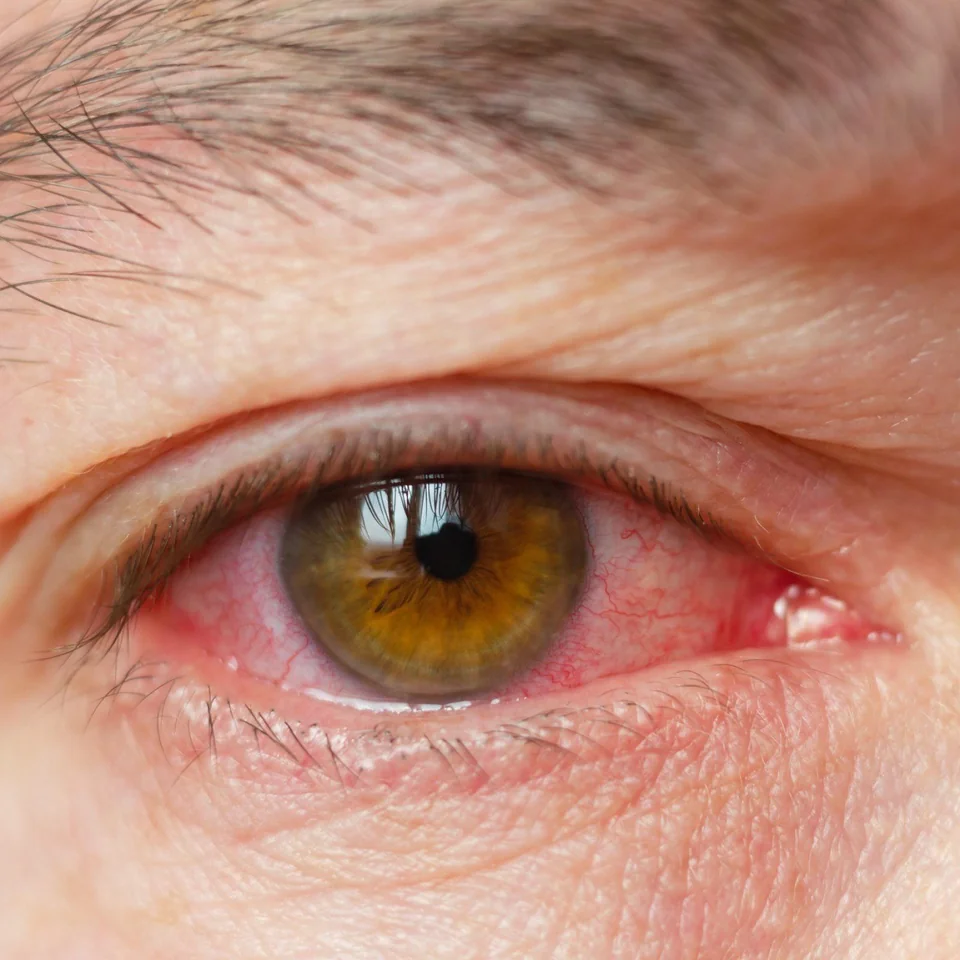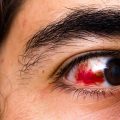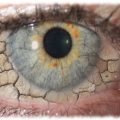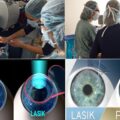Your eyes are at work from the moment you wake up to the moment you close them to go to sleep. They take in tons of information about the world around you — shapes, colors, movements, and more. Then they send the information to your brain for processing so the brain knows what’s going on outside of your body.
Your eyes can see about 200 degrees in all directions, including in front of you and to the sides (peripheral vision). Parts of your eyes work together to allow you to see images, movement and depth. Your eyes can see millions of colors in varying shades.
One of the most irritating things in life is when it feels like something is in your eye. The irritation, tearing, and pain along with this feeling doesn’t make it better either
What causes the needle poking sensation in the eye?
Many conditions can affect how your eyes work, but a needle-poking sensation in the eye is most often a foreign body sensation. A doctor may not find anything wrong with your eye. If you had something very small in your eye, like a speck of dirt, tears may have washed it out. Or you may have a small scratch on the surface of the eye (cornea), which can make it feel as if something is still in your eye.
Foreign body sensations can cause eye discomfort without there actually being anything in the eye. Dry eyes and inflammation of the eyelids (Blepharitis) can also make it feel the needle poking sensation as though something is in the eye.
Nevertheless, it is always advised that you see your doctor to check your vision and examine your eye. Your eye may be numbed with drops. Sometimes a drop of colored fluid is put in the eye. This lets the doctor have a better view of the surface of the eye.
Always wear protective eyewear to prevent injuries, especially during contact sports or if you have a job working with tools that could potentially lead to eye injuries (welding, metalwork, woodworking, etc).
What Are The Signs and Symptoms of Eye Injuries?
Symptoms and signs of eye injuries are the following.
Chemical exposure: The most common symptoms are pain or intense burning.
The eye will begin to tear profusely, and may become red, and the eyelids may become swollen.
Subconjunctival hemorrhage (bleeding): Generally, this condition by itself is painless. Vision is not affected. The eye will have a red spot of blood on the sclera (the white part of the eye). This occurs when there is a rupture of a small blood vessel on the surface of the eye. The area of redness may be fairly large, and its appearance is sometimes alarming. Spontaneous subconjunctival hemorrhages may occur in the absence of any known trauma. If it is unassociated with other signs of trauma, it is not dangerous and generally goes away over a period of four to 10 days with no treatment.
Corneal abrasions: Symptoms include
- pain,
- a sensation that something is in the eye,
- tearing, and
- sensitivity to light.
Iritis: Pain and light sensitivity are common.
The pain may be described as a deep ache in and around the eye.
Sometimes, excessive tearing is seen.
Hyphema: Pain and blurred vision are the main symptoms.
Orbital blowout fracture: Symptoms include
- pain, especially with movement of the eyes;
- double vision that disappears when one eye is covered; and eyelid swelling which may worsen after nose blowing.
Numbness of the upper lip on the affected side may occur.
Swelling around the eye and bruising often occur.
A black eye is the result of blood pooling in the eyelids. This can take weeks to disappear totally.
Conjunctival lacerations: Symptoms include
- pain,
- redness, and
- a sensation that something is in the eye.
Lacerations to the cornea and the sclera: Symptoms include decreased vision and pain.
Foreign bodies:
Corneal: Common symptoms of a foreign body in the cornea are
a sensation that something is in the eye,
- tearing,
- blurred vision, and
- light sensitivity.
Sometimes the foreign body can be seen on the cornea. If the foreign body is metal, a rust ring or rust stain can occur.
Intraorbital: Symptoms, such as decreased vision, pain, and double vision, usually develop hours to days after the injury.
Sometimes, no symptoms develop.
Intraocular: People may have eye pain and decreased vision, but initially, if the foreign body is small and was introduced into the eye at high velocity, people may have no symptoms.
Light-induced injuries:
Ultraviolet keratitis: Symptoms include
- pain,
- light sensitivity,
- redness, and
- an intense feeling that something is in the eye.
Symptoms do not appear immediately after ultraviolet exposure but rather about four hours later.
Solar retinopathy: Decreased vision with a small area of central blurring is the primary symptom.
Preventing Eye Injuries at Home
Eye injuries are more common than many people think, with household products responsible for more than 125,000 serious eye injuries. “Injuries can occur commonly while cleaning, as chemicals can accidently splash into the eyes,” says Gonzales. “Dusting high-to-reach areas can also put the eye at risk for particles to get into the eye. Yardwork also puts the eye at risk due to fast moving objects possibly approaching the face.” He also notes that special attention should be paid to children and older adults, as the risk for falling is higher and trauma to the eye and face can occur.
You can help protect your eyes from injury at home by following these tips:
- Make sure the edges of furniture and home fixtures have no sharp edges.
- Install lights and handrails to improve safety on stairs.
- Be careful when opening bottles of wine or carbonated drinks.
- Wear chemical safety goggles when using hazardous solvents and detergents. Don’t mix cleaning agents.
- Turn nozzles away from your face before spraying.
- Wash your hands after using household chemicals.
- Use guards on all power equipment.
- Wear protective eye gear while using a lawn mower or weed trimmer, because debris may fly through the air.
Preventing Eye Injuries Outdoors and at Play
Each year, hospital emergency rooms treat nearly 40,000 victims of eye injuries from sports. “A lot of the blunt force injuries to the eye we see in the clinic is sports related,” says Gonzales, “usually from soccer or racquetball. Any sport that has a fast object approaching you puts you at a risk.”
Follow these tips to help keep your eyes safe:
- Wear sunglasses that help protect your eyes from UVA and UVB rays when you are outside. Wear them even on cloudy days.
- Never look directly at the sun, including during an eclipse.
- Read and follow directions before playing games or using the equipment.
- Wear safety goggles or glasses during sports and leisure activities. You may be somewhat aware of your possible risks for an eye injury, but are you taking the easiest step of all to prevent 90% of those injuries? Wearing the proper protective eyewear greatly reduces your risk of an eye injury and vision loss
- Wear a helmet with a polycarbonate face mask or wire shield during high-impact sports.
- Wear safety goggles while using a device that shoots pellets, arrows, paint balls or other projectiles.
- Wear safety goggles when handling fireworks






